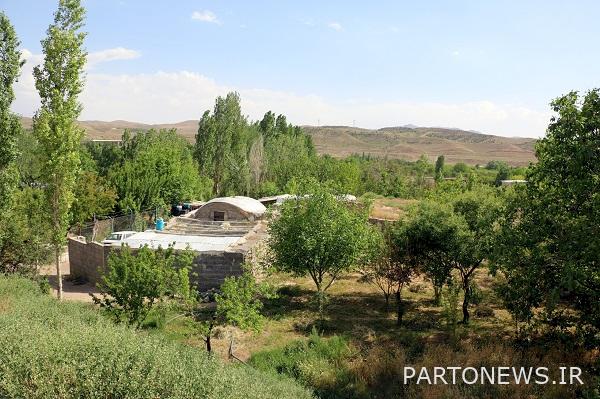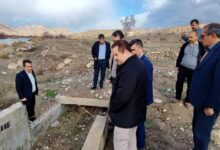Aghar Rahim Glacier is the only traditional glacier left in Zanjan

Buzkhana in Turkish means ice storage or in other words a refrigerator. The exact date of construction of the building is not known. According to some old gardeners in the region, Aghar Rahim Glacier is one of the few traditional glaciers on the southern outskirts of Zanjan, which was built by a person named Aghar Rahim during the first Pahlavi era.
Before the use of electric refrigerators, in the past, residents of Zanjan, like many people in other parts of Iran, used traditional refrigerators to store ice. In the southern part of Zanjan city and specifically on the north coast of Zanjanrood, there were several traditional glaciers, most of which have been destroyed and destroyed today.
Bozkhana or Aghar Rahim Glacier is one of the few traditional glaciers that remains today in one of the private gardens in the south of Zanjan. In the past, this refrigerator consisted of three parts, two of which were connected to each other. At present, two large interconnected halls are left from the old refrigerator, and only parts of the third hall have been renovated.
Today, all three halls have lost their function and are used as livestock storage and storage. The two main halls of the building are built in the east-west direction and face each other with a small door. The third hall, most of which has been destroyed, is built in a north-south direction, a short distance from the previous two halls.
The materials used in the refrigerator are stone carcasses and lime mortar in the walls and bricks in the upper parts and the ceiling. The roof covering is in the form of an arched arch. The type and shape of the arches are mostly crescent-shaped. In the upper parts of the walls, arched windows have been installed at different distances.
All three halls were simple rectangular spaces that used to be ice storage areas. Due to the proximity to the water springs along the Zanjan River, ice storage in this building has been done easily.
To prepare the ice, ponds built at the foot of the canopy wall were filled to a certain level with water on cold winter nights. The extreme cold of the night caused the water in these ponds to freeze. The amount of water that was directed at these frozen masses the following nights was such that the cold of one night could freeze it. In general, the height of the water on the previous ice surfaces did not exceed a few centimeters, and this was repeated until the diameter of the ice reached the depth of the ponds.
After that, the refrigerators, in the mornings, would fall on the ice and, with a hammer or other device, cut the ice into pieces, transfer each piece to the ice tank with shackles and chains, and throw it into the pit.
Due to the destruction and destruction of traditional glaciers in Zanjan in recent decades, Aghar Rahim Glacier is the only surviving traditional glacier in Zanjan and one of the few glaciers in Zanjan province. One of the important features of Aghar Rahim refrigerator is its simple architecture and application of traditional Iranian architecture.
According to the owner, a few years ago, the two main halls of the refrigerator were converted into livestock, but today they have no special use. The third hall has been turned into a warehouse after part of it was demolished and rebuilt.
According to villagers, parts of the dome have been restored by locals in the past.
In terms of architectural art as well as engineering knowledge, the refrigerator is one of the best examples of “human-nature-architecture” knowledge and human interaction with nature behaviors and natural elements in different seasons of the year.

